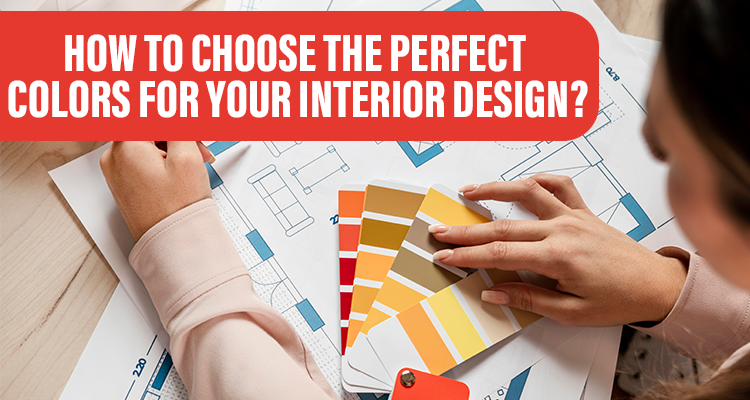
Introduction
Colour has the power to transform a space, evoke emotions, and set the mood in our homes. Choosing the perfect colours for your interior design is a crucial step in creating a harmonious and visually pleasing environment. Whether you’re redecorating a room or starting from scratch, understanding the principles of colour selection can help you create a space that reflects your style and personality. In this article, we will provide you with a comprehensive guide on how to choose the perfect colours for your interior design.
Consider the Purpose and Mood:
The first step in selecting colours for your interior design is to consider the purpose and desired mood of the space. Are you looking to create a cosy and intimate atmosphere in a bedroom or a vibrant and energetic vibe in a living area? Different colours evoke different emotions, so it’s important to align the colour scheme with the intended mood. Warm colours like reds, oranges, and yellows create a cosy and energetic ambiance, while cool colours like blues and greens promote calmness and relaxation.
Understand Colour Psychology:
Colour psychology plays a significant role in interior design. Each colour has its own psychological impact and can influence our emotions and behaviour. For example, blues and greens are known for their calming effects, making them suitable for bedrooms and spaces intended for relaxation. Yellows and oranges are associated with energy and creativity, making them ideal for workspaces or areas where social interaction takes place. Understanding the psychological impact of colours can guide you in creating the desired atmosphere in your home.
Create a Colour Scheme:
Once you have identified the purpose and mood, it’s time to create a colour scheme. Start by selecting a primary colour as the foundation for your design. This colour will set the tone for the entire space. Then, choose complementary or analogous colours to create a harmonious palette. Complementary colours are located opposite each other on the colour wheel and provide a vibrant and contrasting effect, while analogous colours are adjacent to each other and create a more harmonious and soothing combination. Experiment with different combinations to find the one that resonates with your vision.
Consider Lighting and Space:
Lighting and the size of the space are crucial factors to consider when choosing colours. Natural light can significantly impact the appearance of colours, so it’s important to test your chosen colours under different lighting conditions. Darker colours can make a small room feel even smaller, while lighter colours can create an illusion of space and openness. Take into account the natural lighting in the room and choose colours that complement and enhance the available light.
Test Samples and Seek Inspiration:
Before committing to a specific colour scheme, it’s essential to test colour samples. Paint small patches on the walls and observe how they look throughout the day and in different lighting conditions. This will help you visualise the final result and make any necessary adjustments. Additionally, seek inspiration from interior design magazines, websites, and social media platforms. Explore various colour combinations and gather ideas that resonate with your personal style.
Conclusion:
Choosing the perfect colours for your interior design is an exciting and creative process that can transform your home into a harmonious and visually appealing space. By considering the purpose, understanding colour psychology, creating a well-balanced colour scheme, and taking into account lighting and space, you can make informed decisions and create a design that reflects your style and creates the desired mood. Embrace the power of colour and let it elevate your interior design to new heights of beauty and harmony.
